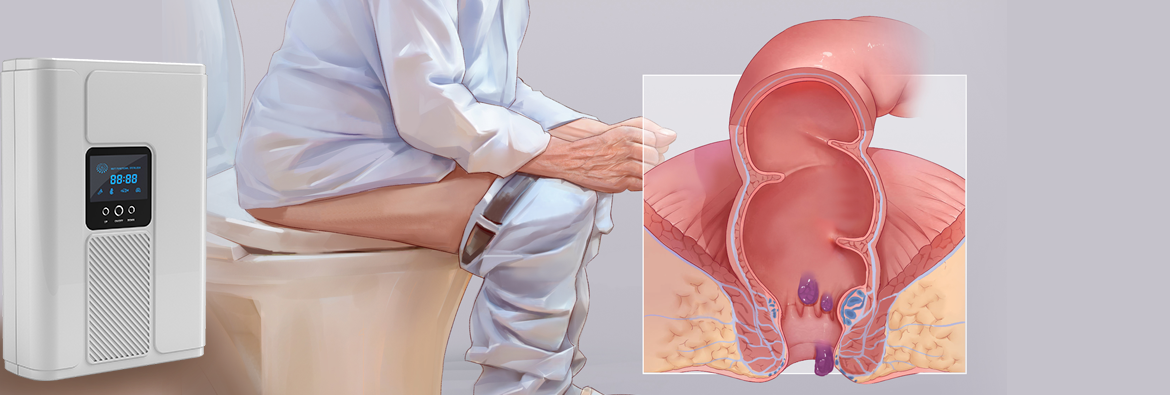
Hospital-acquired infections (HAIs) are a serious public health problem worldwide, especially in the context of the COVID-19 pandemic. HAIs are often caused by multidrug-resistant (MDR) microorganisms, such as bacteria, viruses, fungi, and parasites, that can survive and spread in the hospital environment. The ESKAPE group (Enterococcus faecium, Staphylococcus aureus, Klebsiella pneumoniae, Acinetobacter baumannii, Pseudomonas aeruginosa, and Enterobacter species) is particularly notorious for causing HAIs and being resistant to most antibiotics. Therefore, there is an urgent need for safe and effective disinfection methods to prevent and control HAIs and the transmission of MDR microorganisms.
Ozone generators are devices that produce ozone gas, which is a powerful disinfectant that can kill various microorganisms, including MDR ones. Ozone generators can be used for different purposes in the hospital setting, such as:
Air disinfection, to eliminate airborne pathogens, odors, allergens, and other pollutants from the indoor air, and to improve the air quality and safety for patients and staff.
Surface disinfection, to sanitize hospital equipment, instruments, furniture, bedding, and other items that may be contaminated by microorganisms, and to prevent cross-infection and biofilm formation.
Water disinfection, to purify water sources, such as taps, wells, or springs, that may be used for drinking, washing, or irrigation, and to remove microorganisms, chemicals, and other contaminants from the water.
Ozone is a gas composed of three oxygen atoms (O3), which is generated by applying high voltage or ultraviolet light to oxygen molecules (O2). Ozone has many advantages as a disinfectant, such as:
It is environmentally friendly, as it decomposes into oxygen after use.
It is effective against a wide range of microorganisms, including those that are resistant to chlorine or other chemicals.
It is tasteless and odorless, and does not leave any harmful residues on surfaces or in water.
Ozone disinfects microorganisms by destroying their cell walls and membranes, and by damaging their genetic material (DNA or RNA). Ozone also reacts with other organic and inorganic substances in water or air, producing free radicals that have additional disinfecting effects. The mechanisms of ozone disinfection can be explained from both scientific and biological perspectives:
From a scientific perspective, ozone is a strong oxidant that can break the bonds of organic molecules, such as proteins, lipids, and nucleic acids. Ozone can also form unstable compounds with some metals, such as iron and manganese, which can further oxidize organic matter. Ozone can also generate hydroxyl radicals (OH), which are even more reactive than ozone and can attack any organic or inorganic substance in water or air.
From a biological perspective, ozone disrupts the structure and function of microorganisms by causing cell lysis, leakage of cellular contents, inhibition of enzyme activity, and mutation or fragmentation of DNA or RNA. Ozone can also interfere with the metabolism and reproduction of microorganisms, and prevent them from forming biofilms or spores. Ozone can inactivate viruses by breaking their capsids or envelopes, and by altering their genetic material.
Several studies have shown that ozone generators can effectively reduce the number and diversity of microorganisms, including MDR ones, in the hospital environment. For example:
A study by Hsiao et al evaluated the effectiveness of ozone micron bubble (OMB) treatment for reducing ARGs from infectious medical wastewater in laboratory and on-site pilot treatment setups. The results showed that OMB treatment resulted in a significantly lower CT value (9.3 mg O3 L-1 min) compared to ozone coarse bubble treatment (102 mg O3 L-1 min) under identical test conditions. Moreover, the use of OMB on site significantly reduced the accumulation of ARGs in hospital wastewater, underscoring its potential as an effective solution for mitigating ARG spread.
A study by Rangel et al evaluated the bactericidal effect of a high concentration of O3 gas on some reference and ESKAPE bacteria. The results showed that the culture exposure to a high level of O3 inhibited the growth of all bacterial strains tested with a statistically significant reduction in colony count compared to the control group. The cell viability of S. aureus (MRSA) (99.6%) and P. aeruginosa (XDR) (29.2%) was reduced considerably, and scanning electron microscopy (SEM) showed damage to bacteria after O3 treatment.
A study by Menéndez et al evaluated the efficacy of ozone sterilization for combating bacterial infections in severe burns, decubitus, and leg ulcers. The results showed that ozone sterilization was able to eradicate the infection in 97.5% of the cases, with no adverse effects or complications. The authors concluded that ozone sterilization is a safe, effective, and low-cost method for treating infected wounds.
Shenzhen Wish Industry Co., Ltd. is a leading manufacturer and supplier of ozone products and solutions. They offer various models and sizes of ozone generators, suitable for different applications and needs.
You can visit their website at [www.ozonewish.com] to learn more about their products and services. To choose the best ozone generator from Shenzhen Wish Industry Co., Ltd., you need to consider the following factors:
The application and purpose of ozone disinfection. You need to determine the type and amount of air, water, or surface that you want to disinfect, and the level and standard of disinfection that you want to achieve. You also need to consider the environmental and regulatory requirements that apply to your application and location.
The budget and cost of ozone disinfection. You need to balance the initial and operational costs of ozone disinfection, and to compare them with the benefits and savings that you can get from ozone disinfection. You also need to consider the warranty and after-sales service that Shenzhen Wish Industry Co., Ltd. provides for their products and customers.
The features and specifications of ozone generators. You need to compare the ozone concentration, power consumption, cooling method, feed gas, and other parameters of different ozone generators, and to choose the one that meets your needs and expectations. You also need to check the quality and reliability of the ozone generators, and to read the reviews and feedbacks from other customrs.